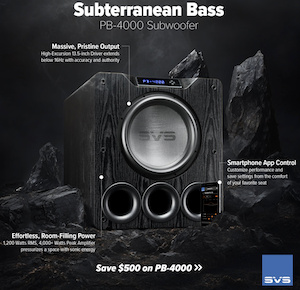Hello REW forums,
I am trying to measure the frequency response of a woofer and a tweeter separately in a 2x12 cabinet in hope of using that data to create an ideal crossover for this enclosure. I've calibrated for my sound card and microphone, but I'd like to also calibrate for the room to effectively isolate the speaker/enclosure. I've taken a room measurement using my studio monitor and mic in the position that I'll be measuring my cabinet, and I'd like to know if there is a way to calibrate for this response in REW as well so that my target response is only the speaker and enclosure.
Thanks for any help in advance.
There is no way to remove the room as you are suggesting I'm afraid. different speaker drivers with different responses and dispersion characteristics will interact with the room differently. There is not a way to remove the effect of the room from the response of another speaker using a reference speaker accept for at low frequencies, basically below FS.
To take measurements of a speaker in a room and remove the effect of the room you need to place the monitor in the largest room you have available placed roughly in the middle of the room (but asymmetrically by enough to avoid compounding modes and reflections). Aim it towards a long corner if possible and place the mic 1-2 meters from the speaker. Then you window the impulse response at the point of the first reflection. This shows up as a blip in the impulse after the initial impulse.
You can also take measurements of the speakers at close range and splice them, but the data at different angles is very important and close micing is tricky with such close placement of the mic. I don't suggest the close mic approach for crossover design myself.
There is ground plane measurement.
http://www.mh-audio.nl/Groundplane.asp
This removes the reflections by placing the speaker on the ground. The biggest problem with the ground plane is that it operates by creating a mirror of the speaker which increases output (so don't use it for sensitivity measurements) and the effect isn't always even. I may just be doing it wrong, but my experience is that it boosts the bass unrealistically. A friend of mine who reviews for another magazine has had his techniques verified by Harman, and is highly experienced has had the same problem.
There is the infinite baffle pit method. Dig a hole in the ground, place the speaker in the hole such that its face is even with the ground (roughly). Place a plane of wood over it with an opening that matches that of the speaker baffle to create a smooth infinite baffle with the ground. Measure with the microphone in the air 2 meters and pointing down. This is totally reflection free, equals anechoic but with an artificial bass boost (which you can calculate and remove). I find this method impractical, but I know some speaker designers who do this.
Finally, and my preferred method, Take the speaker outside. Stick it on a turntable with precise angle markers that is 7-10 feet up in the ear. Place your measurement microphone 1-2 meters from the speaker on a long boom pole. Measure in angle increments you are comfortable in using for the crossover design. Ideally, it should be like 1 degree or 2.5-degree increments. I get lazy and often do 5 degrees or even 10-degree increments. It matters, don't get me wrong, but it's a lot of work. To do a full frontal hemisphere, you need to measure across a 90-degree range from the center to the side of the speaker. A lot of people like to do the full 180 degrees just as a confirmation that the dispersion is symmetric on both sides. It won't be if the tweeter or woofer is asymmetric in the baffle (or if something else about the design creates asymmetric dispersion). Measuring around to the back of the speaker is also technically required for the power response. You also need to repeat this in the vertical direction. Then window the measurement to remove ground bounce. This gives you resolution down to 150hz to 300hz or so, depending.
Paul Barton of PSB has also pushed me to put absorbers on the ground. My own mentor in this disagrees, preferring to window out the reflection, rather than partially absorb it. I've been reluctant to test this, but hope to do so in the future. If you can fully absorb the ground bounce, your measurement is arguably each to anechoic. The biggest negative to the outside is that it's often noisy and windy. I live in a quiet area, so road or car noise is not an issue for my measurements, but wind noise can be. What I've found is that wind noise corrupts the low frequencies primarily and the distortion plots. To address this I use the ground plane for LF response and I use close mic measurements in my soundproof theater for distortion.












